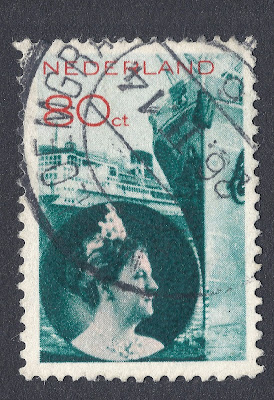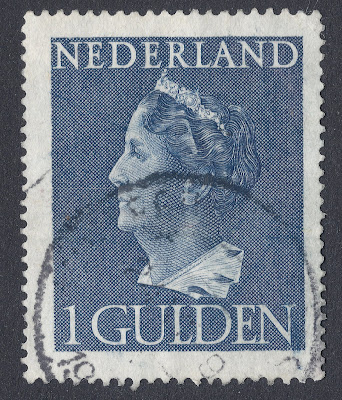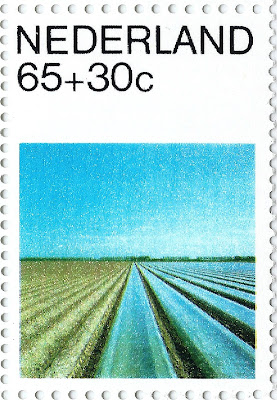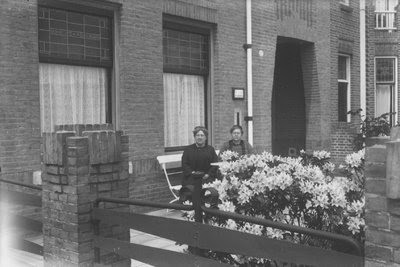Last
night a grand state banquet was held in Buckingham Palace in honour of the
state visit of King Willem-Alexander and Queen Maxima to the United Kingdom. A
historic state visit, since Willem-Alexander is the third (!) monarch of the
Netherlands to visit the U.K. during Queen Elizabeth’s reign. Whilst Brexit was
certainly discussed, the king’s speeches to the U.K. parliament and Queen
Elizabeth stayed both very diplomatic (as was expected) and amicable.
In the
months and weeks prior to the state visit, many royalty experts eagerly
discussed the possibility of Queen Máxima wearing the so-called Stuart Tiara
(and accompanying parure) which was last worn by Queen Juliana (reign:
1948-1980) in the 1970s. Her daughter queen Beatrix (reign 1980-2013) never seemed to have worn
the set in public. She might have had her personal reasons not to wear it, but certainly its absolute stunning extravagance (see photo below) will not escape anybody's attention.
The tiara itself is massive and was ordered by Queen Emma for her daughter Wilhelmina on the occasion of her inauguration in 1898. Its absolute piece de resistance is the fabulous Stuart Diamond which has
been in possession of the Dutch royal family for centuries. Stadtholder-King
William III of the Netherlands and England acquired this uncut diamond for his
wife Mary in 1690 and in the same year an Amsterdam diamond cutter polished it
into a heavy 39,75 carat gem.
 |
| NVPH 1407 - 1988 - 75c |
 |
| Queen Máxima with the Stuart Diamond tiara in Buckingham Palace yesterday |
This
story inspired me to look at Dutch (colonial) stamps bearing engravings/photo’s
of queen Wilhelmina and Juliana, as I knew some of them depicted tiara’s as
well. Of course I wondered if the Stuart tiara was ever portrayed on a Dutch
stamp… I soon found out though that it proved very hard to precisely determine
the small and sometimes roughly engraved tiara’s. Moreover, it appeared to me
that some tiara’s on these stamps seemed to have vanished altogether…or even never existed in the first place. Please
read my report below. In this particular post I will pay attention to tiara’s
on Dutch stamps only. Mu next post will discuss Dutch colonial stamps.
Inauguration
of Queen Wilhelmina and subsequent 'Fur collar' series
 |
| NVPH 77 - 1899 - Queen Wilhelmina 1g |
On the
occasion of Wilhelmina’s inauguration in 1898 the P.T.T. issued a so-called
inauguration stamp which is almost identical to the stamp above. This stamp though is part of the high value definitive ‘Wilhelmina Fur Collar' series which
is considerably cheaper than the real inauguration stamp...and therefore saves me some money.
When we
look closely we see that the young queen wears a tiara – but after an even closer inspection we observe that it is not the Stuart tiara, which was
specifically made for her inauguration! A real shame she was not portrayed with the Stuart here. Instead she seems to wear the so-called
Württemberg Ornate Pearl Tiara. This tiara was probably crafted in 1897 and – contrary
to popular belief – has nothing to do with Sophie of Württemberg (first wife of
king William III). Queen Beatrix was apparently quite fond of the piece but
often wore it without the characteristic pearl ‘toppers’ – too preposterous to
her likens I guess? Sometimes though, on very special occasions she did add the
pearls, for example while she visited Queen Elizabeth in 1982 or on the eve of her abdication in 2013. The Württemberg tiara can be found on all other stamps of the ‘Fur Collar’ series of 1899-1921.
 |
| NVPH 71 - 1899 - Queen Wilhelmina 15c |
Definitive series queen Wilhelmina 'Veth' 1924-1930
 |
| NVPH 165 - 1926- Queen Wilhelmina 5g |
The first
stamps of the next definitive series of queen Wilhelmina were issued in 1924
and they bear a handsome engraving of her with a different tiara. I’ve chosen the 5 guilder as example here, since it was printed in a larger size than the lower
values. After searching a while through some online depots, I found
the following two drafts of designer Jan Veth.
 |
| 2nd draft by Veth |
 |
| 1st draft by Veth |
It strikes me that in the first draft he had drawn the Württemberg tiara, while in the second one he obviously opted for a different tiara. A problem remained though: I couldn’t find a single tiara belonging to the royal family with at least 9 pearls on one side. It seems to me Prof. Veth produced a brand new tiara out of his pencil…
1931 Photo Queen
 |
| NVPH 237 - 1931- Queen Wilhelmina 80c |
A
special stamp appeared in 1931 with a photo of Queen Wilhelmina. A first, since
the P.T.T. had never used photo’s on its stamps before. In 1933 the 80c value
was issued. Because of the photo we do not have to be afraid some designer made
up an artificial tiara (or do we?). Still, it was not easy to trace down this particular
tiara as the photo quality isn’t spectacular and we only see Wilhelmina en
profil . After comparing it to other stamps (especially colonial ones) and
the 40th anniversary of Wilhelmina’s reign stamp of 1938, I’m fairly
convinced though that this is the so-called Wedding Gift Tiara. A Dutch jeweler
crafted this now-lost voluminous diamond and sapphire tiara in 1900 on the
occasion of Wilhelmina’s wedding to Henry of Mecklenburg-Schwerin in 1901.
Juliana
had dismantled this tiara – maybe because of its sheer size – and several new
jewels were made out of it for her daughters.
Crisis 1934
 |
| NVPH 265 - 1934- Queen Wilhelmina 5c |
In 1934
the P.T.T. issued two charity stamps on behalf of the Dutch National
Crisis Committee. The other stamp bears an image of princess Juliana – alas without
a tiara! On the depicted stamp we observe a very regal queen Wilhelmina wearing a tiara, but we’re in for a
second disappointment: this is also an imaginary fabrication of an artist
(Fokko Mees). The photo upon which this engraving was based is the same one
which was used for the 1931 stamp with the Wedding Gift Tiara (see below).
Fokko
Mees did draw a more true to nature draft version though:
In 1938 a series of stamps was
issued in honour of queen Wilhelmina’s 40th ‘ruby’ jubilee. A fine and detailed drawing by
designer Pijke Koch can be found online. She does wear the Wedding Gift Tiara here again.
 |
| NVPH 311 - 1938 - Queen Wilhelmina 5c |
 |
| Drawing by Pijke Koch |
1940-1947 definitive series Queen Wilhelmina 'Konijnenburg'
 |
| NVPH 332 - 1940 - Queen Wilhelmina 5c |
 |
| NVPH 349 - 1946 - Queen Wilhelmina 1g |
If I'm not mistaken Queen Wilhelmina wears the so-called ruby Mellerio Tiara on these stamps. Especially the engraved version clearly shows us this particular tiara. I was grateful to find an original drawing of Van Konijnenburg and the photo upon which he modeled his stamp:
 |
| Queen Wilhelmina with Mellerio Tiara |




























